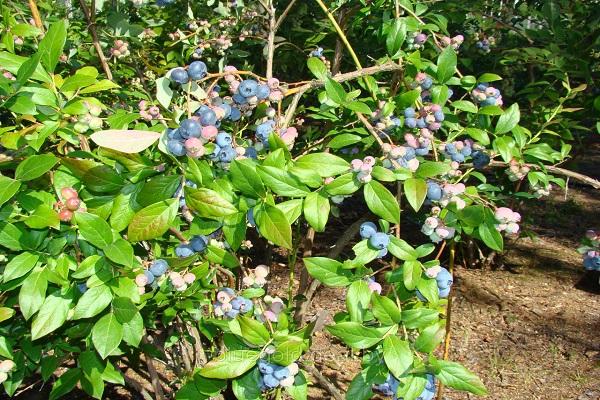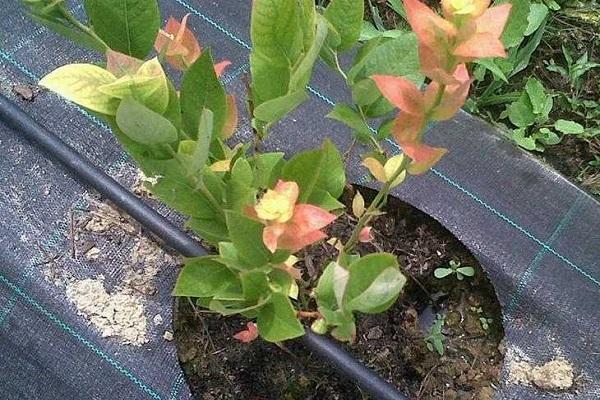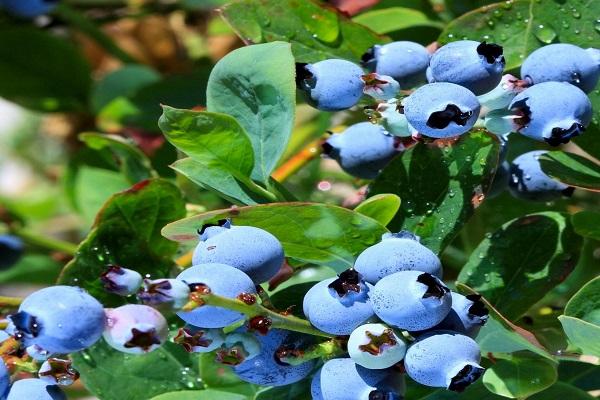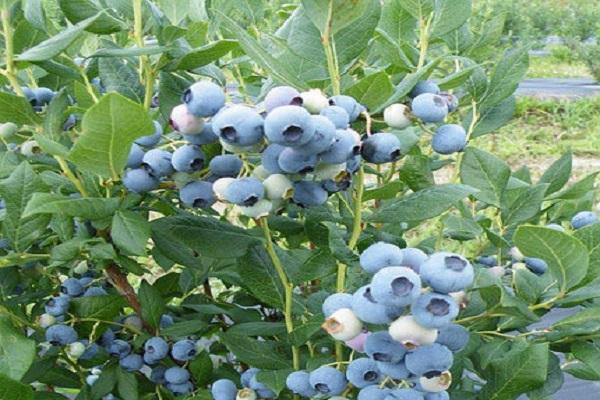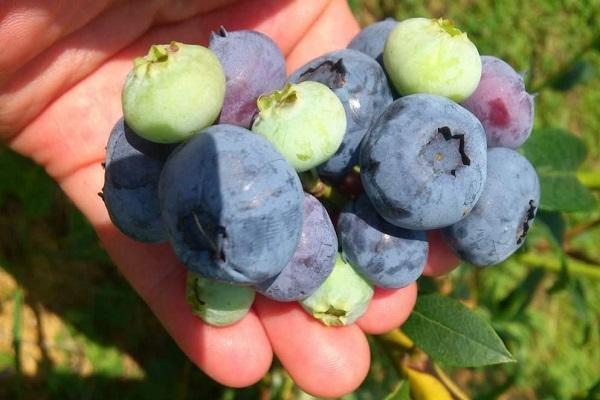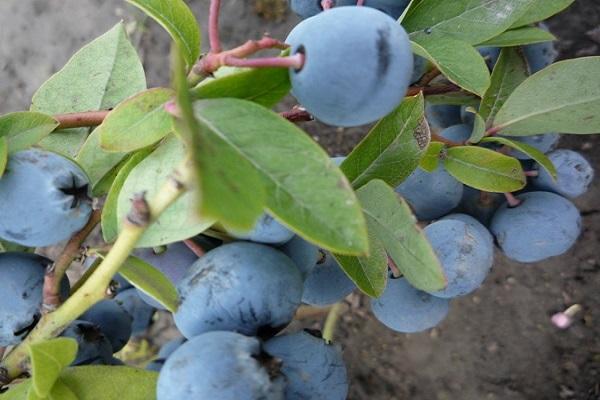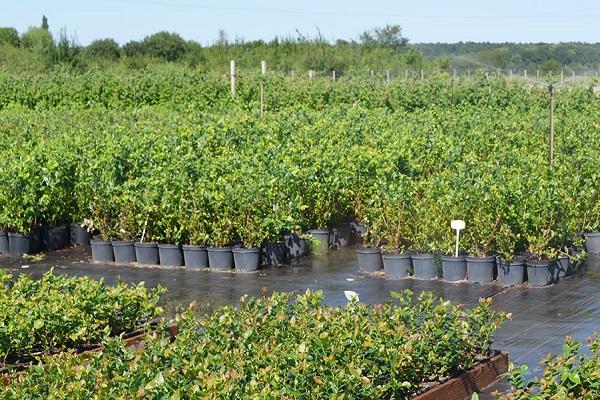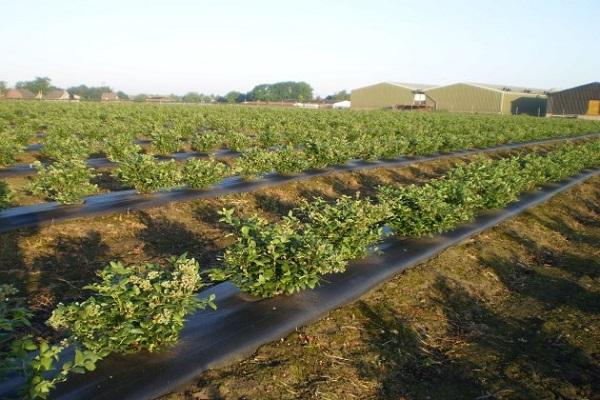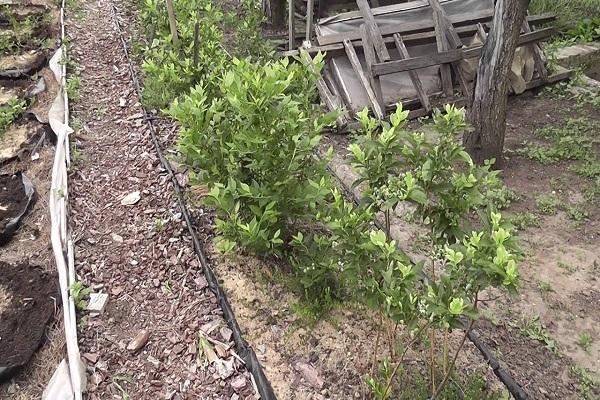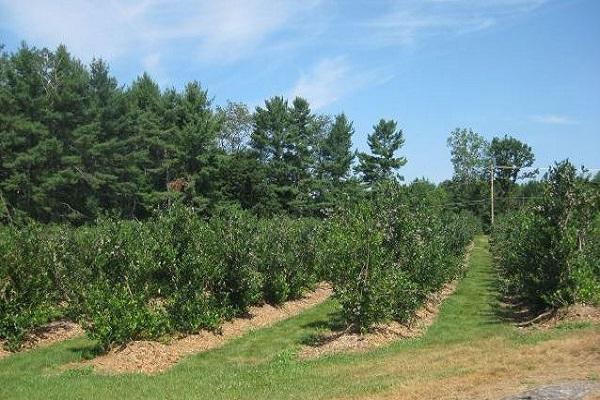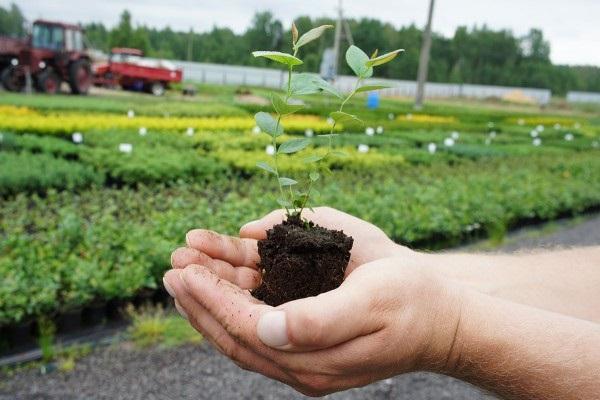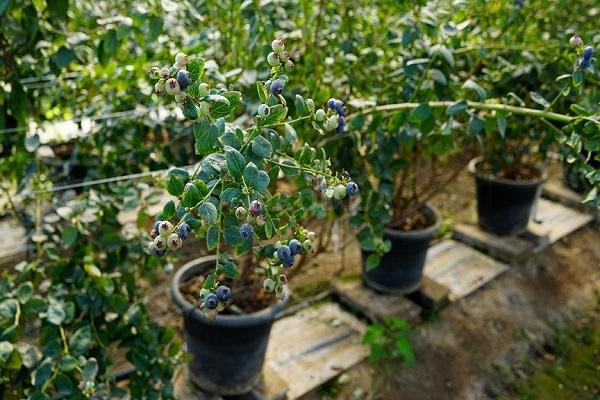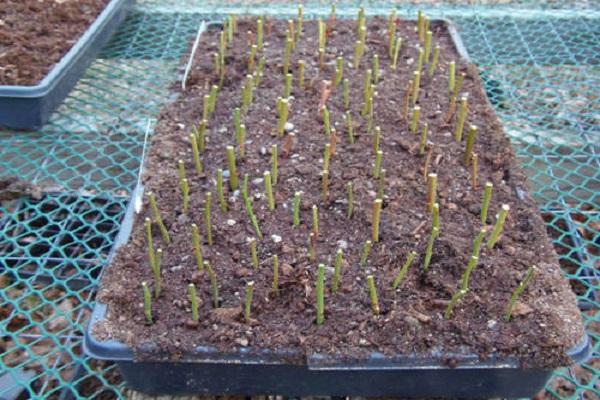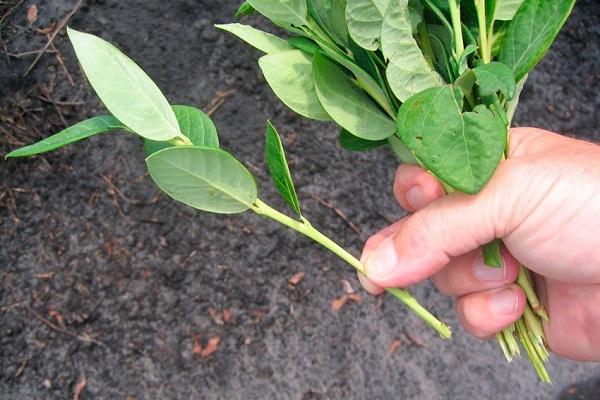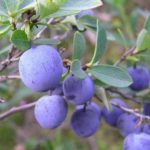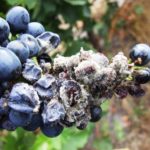Elizabeth blueberries are one of the best breeding hybrids that came to Russia from the USA. Domestic gardeners fell in love with the crop for its bright aroma and taste of berries. Attracted by the decorative and winter hardiness of the bushes, the rich vitamin and mineral complex in the fruit.
- History of the development of the Elizabeth blueberry
- Advantages and disadvantages of culture
- Characteristics and description
- Appearance of the bush and branching of the root system
- Flowering and fruiting
- Low temperature resistance
- Resistance to diseases and parasites
- The nuances of planting crops on the site
- Timing of planting work
- Selection of seedlings
- Preparing the soil and planting hole
- Blueberry planting technique
- We organize proper care
- Irrigation and fertilization of bushes
- Loosening and mulching beds
- Preventative treatment
- Formative pruning
- Shelter for winter
- Reproduction methods
- Seminal
- Vegetative
- Reviews about the variety
History of the development of the Elizabeth blueberry
The daughter of an American farmer, Elizabeth White, became interested in growing berry bushes from a young age, and devoted her entire life to her favorite business. By selecting wild blueberries with marketable fruits and planting them on our own plantations, we achieved domestication of the plant. But Elizabeth was not satisfied with the size of the berries.
A meeting with botanist and plant breeder Frederick Coville changed everything. Thanks to joint efforts, crops with varietal properties were obtained. The hybrid variety Elizabeth, named after the farmer's wife, was developed much later by crossing the Scammell, Katharine and Jersey varieties. The first batch of berries went on sale in 1966.
Advantages and disadvantages of culture
Among the advantages of Elizabeth blueberries, gardeners note:
- high plant productivity - 5–7 kg per bush;
- rich taste of berries with blueberry-grape flavor;
- frost resistance up to – 32 °C;
- preservation of varietal properties during temperature changes;
- persistent built-in immunity that resists diseases characteristic of blueberries;
- strong connection of berries with the stalk;
- presentation of the fruit after transportation.
The culture is not without minor disadvantages that are worth paying attention to when growing. These include:
- long onset of fruiting - the sixth or seventh year from the moment of planting;
- partial death of flower buds during late frosts;
- uneven ripening of berries - 2-4 weeks;
- lack of time for the crop to ripen when early cold weather sets in.
Another drawback is the short shelf life of the crop, so it is recommended to preserve the berries immediately after picking, freeze them, or eat them fresh.
Characteristics and description
The culture belongs to the tall, medium-late ripening varieties with excellent taste characteristics. In the southern regions of Russia, the first Elizabeth blueberries are enjoyed starting in the second ten days of July, in the middle zone and further north - in August.
Appearance of the bush and branching of the root system
In spring, green with a red tint, multiple shoots of blueberries begin to grow rapidly. The branches are of medium thickness - erect, spreading, intertwined. Brick-colored flowering shoots become woody and lighter with age. The bush reaches a height of 1.8 meters and a width of 1.5 m.
Small matte light green leaves acquire yellow and red tones closer to cold weather. The leaf blades are elongated, pointed at the ends, and slightly pubescent on the inside. The root of the plant is fibrous, up to 40 cm in size.
Flowering and fruiting
Elizabeth blueberries bloom in the spring and summer - late May–early June. The buds bloom with white flowers, shaped like a bell. The length of the petals is 1.5 cm.
The culture belongs to self-pollinating varieties. Despite this, other blueberry varieties are planted nearby and bloom at the same time. Cross pollination increases the quantity and quality of the crop.
The large blue berries with a white coating have an excellent dessert taste, distinguished by sweetness and notes of grapes, blueberries, and currants. Among late-ripening varieties, Elizabeth stands out for its exquisite taste and rich aroma.
The size of the berries in diameter is 1.6–2.5 cm.The pulp is liquid, the skin is not thick, but strong, retains the round, slightly flattened shape of the fruit when transported in its original state. Harvest ripening is uneven. Gardeners pick fresh berries, collected in loose clusters, throughout August. The separation from the stalk is light and dry.
An adult bush produces an average of 5 kg of berries annually. When planted in the southern regions and following agricultural technology, the yield increases to a maximum of 8 kg.
Low temperature resistance
According to the international classification of frost resistance, Elizabeth blueberries belong to USDA zone 4b. This means that the plant can withstand cold temperatures down to – 31.7 °C.
Some plants are not as afraid of frost as a sudden thaw or May frosts. The Elizabeth variety survives under these unfavorable conditions, although it loses part of its harvest due to return frosts.
Resistance to diseases and parasites
Elizabeth blueberries, due to their artificially built-in immunity, have high resistance to root rot, late blight, and stem cancer. The plant is susceptible to spotting and gray rot. Of the insects, the greatest damage to the crop is caused by scale insects and aphids.
The nuances of planting crops on the site
In order for blueberries to develop correctly, bear fruit abundantly and consistently, the composition of the soil, timing and technology are taken into account when planting.
Timing of planting work
Elizabeth blueberries are planted in May after return frosts or in September so that the crop has enough time to take root before the onset of frost. The advantage of autumn planting is stronger, more resilient planting material. In spring, even weak seedlings take root well.
Selection of seedlings
It is more reliable to purchase Elizabeth blueberries from specialized nurseries or large gardening farms.The seedling should not have dried areas of bark, deformed, broken or diseased shoots. Seedlings with a moistened, closed root system take root faster.
Preparing the soil and planting hole
Blueberries love acidic soils. Suitable soil for the culture is high-moor peat, soil from a coniferous forest. If the pH in the area is above 3.5–4.5, it is necessary to add acidifying agents. Gardeners use acetic, citric, oxalic acid, electrolyte, but the safest product for plants is sulfur powder. Sulfur is scattered over moistened soil (15 g per 1 sq. m.) and dug up.
Natural acidifiers include sawdust and pine needles. Before planting Elizabeth blueberries, 1 sq. m of soil add 35 g of potassium, 20 g of phosphorus and nitrogen, 7–8 kg of rotted manure or humus. The earth is dug up onto the bayonet of a shovel and sand is added. Drainage (crushed stone, vermiculite or perlite) is placed in a hole 60 cm deep and wide, then spilled with warm water or a solution of a growth stimulator.
Blueberry planting technique
The transshipment method is considered less painful. An Elizabeth blueberry seedling in a container is irrigated abundantly, placed at the bottom of a prepared hole, and removed from the container. Vertical grooves are made on an earthen coma filled with roots to activate growth. Next, the seedling is covered with soil, deepening the root collar by 10 cm.
Water the plant with warm water with the addition of manganese or fungicides to disinfect the soil. 5 liters is enough for each bush. The planting procedure ends by mulching the circle around the trunk with a 5-centimeter layer of sawdust, straw, and bark.
We organize proper care
If you want to get a high and stable harvest, it is important to properly care for blueberries - water them in a timely manner, feed them, loosen and mulch the soil, and prepare the crop for winter.
Irrigation and fertilization of bushes
Elizabeth blueberries are moisture-loving plants, so regular soil moisture is an integral part of caring for the crop. Berry bushes do not tolerate drought and stagnant water. If there is not enough rain, the plant is watered twice a week. Irrigation in two stages contributes to constant soil moisture. The first time a bucket of water is poured under the bush early in the morning, the second time the same volume in the evening.
If irrigation is not enough for blueberries, spraying is used. The event is carried out in the evening, when the leaves are not burned by direct sunlight on drops of water.
The yield of Elizabeth blueberries increases after fertilization. Before bud break and during flowering, the crop is fed with urea, azophosphate, ammonium sulfate or any other complex fertilizer with an emphasis on nitrogen, which stimulates plant growth. At the end of June and beginning of July, potassium-phosphorus fertilizers are applied, which affect the formation of fruit ovaries and the amount of harvest.
There is enough organic matter for the first three years. Every fourth year, a bucket of compost is added to each bush.
Timing of application and amount of fertilizer depending on the age of blueberries. In the first year, the plant does not need soil fertilization if the soil was fertilized when planting.
Table of norms of complex mineral fertilizers depending on the age of Elizabeth blueberries.
| Blueberry age, year | Feeding time | Norm per year, art. l. | ||
| Beginning of sap flow, in% of the annual norm | Budding period, % of the annual norm | End of June - beginning of July,
in % of the annual norm |
||
| 2 | 40 | 30 | 30 | 1 |
| 3 | 50 | 25 | 25 | 2 |
| 4 | 50 | 25 | 25 | 4 |
| 5 | 40 | 30 | 30 | 8 |
| 6 | 40 | 30 | 30 | 16 |
Blueberries actively develop up to six years. At older ages, the amount of fertilizer remains unchanged.
Loosening and mulching beds
Moisture, which is important for Elizabeth blueberries, is achieved by frequent irrigation and loosening of the soil, which increases water and air permeability. But more often, gardeners go the other way, using mulching.
The procedure is carried out at least three times per season.
Shredded tree bark, rotted leaves, straw, and softwood sawdust are used as mulch, which are placed under the bushes in a 5–15 cm layer.
Benefits of mulching Elizabeth blueberries:
- moisture retention;
- no weeds;
- increasing the concentration of organic substances;
- smoothing out negative consequences of sudden temperature fluctuations;
- improvement of wintering conditions.
Carrying out agrotechnical measures maintains soil acidity at the proper level.
Preventative treatment
Protecting Elizabeth blueberries from diseases and pests includes preventive measures:
- maintaining a distance between bushes of at least two meters when planting;
- sanitary pruning of diseased, damaged branches;
- removal of shoots that thicken the crown;
- mulching the soil with sawdust, weeding rows;
- preventive treatment of bushes with Bordeaux mixture in April;
- spraying blueberries three times at weekly intervals with fungicides in late autumn.
To prevent the development of spots and gray mold on the crop, the bushes are sprayed with solutions of Medox, Skor, Horus, Azophos.
Formative pruning
Sanitary pruning of Elizabeth blueberries is performed annually in the spring, before sap flow begins, and in the fall after leaf fall. Remove diseased, deformed, broken branches. In the third year, all shoots except the skeletal branches are cut out.After a year, flowering shoots grow on them, which are directed upward and tied up. In the fifth year, branches of the second order grow.
Formative pruning is performed only in the sixth year after planting. Four fruiting shoots and the same number of young shoots are left, the rest are cut out.
Shelter for winter
Preparatory activities for winter:
- mulch the circle around the trunk with a thick layer of bark, sawdust, straw;
- closer to frost, 6–7 buckets of water are poured under each blueberry bush;
- The branches of the plant are bent to the ground, secured with arches, and agrofibre, burlap, and spruce branches are secured on top.
Despite the frost resistance of Elizabeth blueberries, it is better to play it safe and use a covering material. This is especially true for young bushes up to four years of age and the northern regions.
Reproduction methods
The culture is propagated in the following ways:
- seeds;
- green, woody, root cuttings;
- layering;
- dividing the bush;
The most popular blueberry propagation method among gardeners is cuttings.
Seminal
To obtain seeds, ripe berries are ground and dipped in a container of water. Specimens that have sunk to the bottom are suitable for planting. Seeds are planted in the ground in early autumn or planted in containers in March, after keeping them in the refrigerator for 3 months.
Elizabeth blueberry planting algorithm:
- the peat substrate in containers is moistened;
- sow planting material without deepening it;
- sprinkle with a 2 mm layer of peat;
- a film is stretched on top or glass is placed;
- regularly moisten the soil and ventilate it;
- the shelter is removed after the first shoots appear;
- in the three-leaf phase, blueberries are planted in individual pots;
- take it outside before the onset of cold weather;
- In the fall, the plants are brought onto the veranda or other room without heating and insulated.
The crop is planted in a permanent place after 2 years.
The disadvantages of this method of propagation are the late onset of fruiting - after 7 years, and the lack of guarantees for maintaining the varietal characteristics of the plant.
Vegetative methods are more preferable; they do not change the varietal properties of the crop.
Vegetative
Elizabeth blueberries are propagated by:
- Cuttings
Lignified 15-centimeter cuttings are obtained from mature shoots, excluding flowering shoots, collected during the winter. The bottom is cut obliquely under the bud, the top is even at a distance of at least 2 cm from the bud. Planted in greenhouses or in the garden, covered with film, in April.
Green cuttings take root faster and in greater numbers. Strong shoots of the current year are selected in mid-summer. It is separated from the trunk with a sharp jerk. The lower half of the cuttings is freed from leaves, the remaining ones are thinned out so that they do not overlap each other when planting. For rapid rooting, greenhouse conditions are created for the planting material - a temperature of 20–24 °C, regular moistening and ventilation. In winter they leave it in the same place, having previously insulated it.
- By layering
The method of propagating Elizabeth blueberries by layering, although practiced by Russian gardeners, cannot be called effective, since the outcome of the event is unpredictable. Young flexible shoots of the plant are pressed to the ground and placed in prepared grooves. Press down with wooden or metal pins and sprinkle with peat along the entire length. 2–3 years after the formation of new plants, they are planted.
- Dividing the bush
Blueberries are dug up and divisions are made, consisting of two to three shoots and roots at least 5–7 cm long.Each part is immediately planted in a permanent place. The harvest appears after 4 years. To ensure rapid adaptation, cuttings and layering of the crop are kept in Kornevin’s solution, which stimulates root growth.
Reviews about the variety
Gardeners characterize varietal blueberries in different ways, but there are more positive descriptions.
Marina Viktorovna, 60 years old:
I have been growing Elizabeth blueberries for nine years. The harvest ripens by September. The berries are large, tasty, and do not fall off for a long time. One problem is that the bushes are infested by aphids. I tried all the folk remedies. It’s useless, no soap solutions could rid the crop of insects. Only the drug Aktara helped.
Svetlana Vladimirovna, 45 years old:
I agree that the Elizabeth variety is one of the best blueberry varieties. I couldn’t resist and bought two seedlings. Unfortunately, the berries do not have time to ripen in our climate. I live in the Urals.
Maria, 25 years old:
I’m looking forward to August, when Elizabeth blueberries ripen at my mother’s dacha. The berries are very tasty. The balance of sugar and acid and the bright aroma are captivating.


